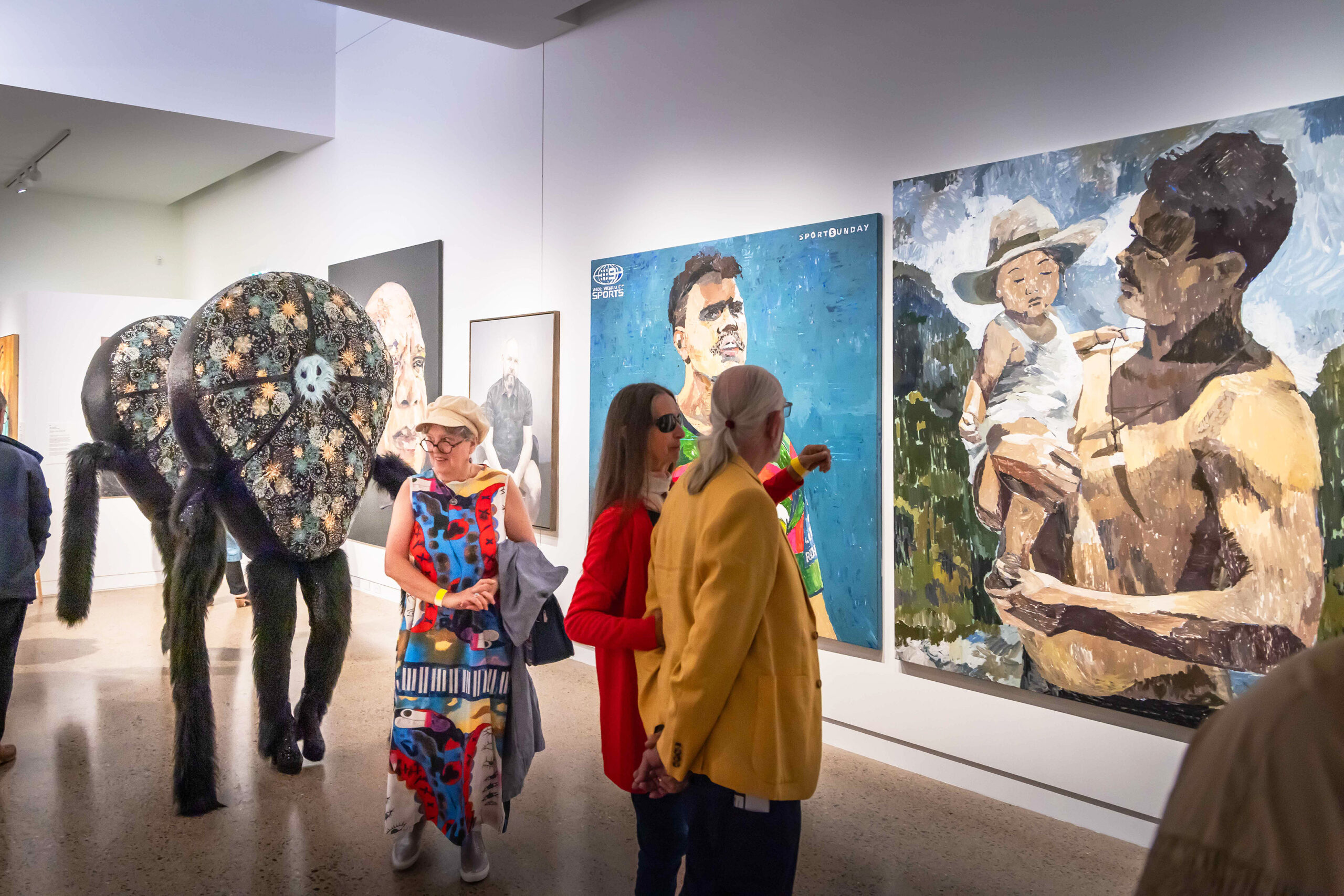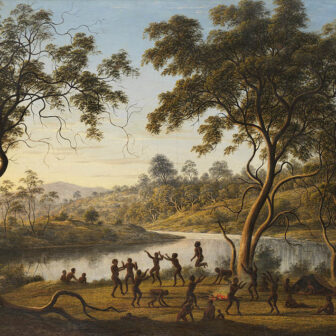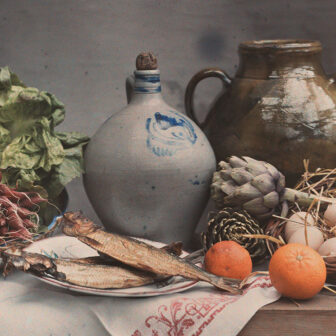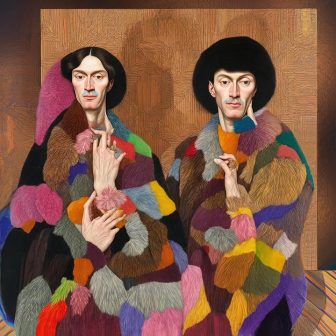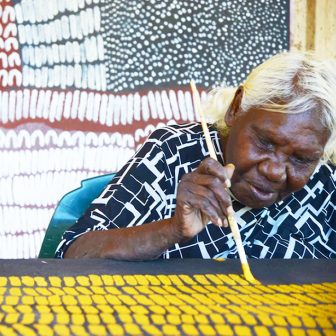I resisted the siren song for years. As a stern Melburnian even while living and working in Sydney, I forever dismissed the Archibald portrait competition as just another Tinsel Town self-indulgence: Sydney celebrities posing for celebrity portraits by celebrity artists; to be tolerated but not indulged.
My Damascene conversion came only recently, and it occurred at Bega, a dairy town on the NSW south coast near where I now live. Far from the urban smog and traffic jams and celebrities, the south coast celebrates its own distinct cultural vibe. It has just reopened its art gallery — mid-town, gem-like — with an exhibition of the 2023 Archibald finalists.
Like any collective venture in regional Australia, the gallery needs volunteers. I put my hand up, and since the gallery opened I’ve spent several full days as a gallery volunteer prowling around in the silent presence of the fifty-seven portraits. It’s been a full-immersion experience, and now, like any new convert, I’ve become a zealous proselytiser.
What is it about the Archibalds? Since childhood, we’ve learned to appraise the people we meet by looking at their faces. We learn their age, their experience, their character; we understand whom we can trust. Show us fifty-seven faces on the walls of an art gallery and it’s the same: we’re all experts.
So people feel comfortable walking into the Archibalds — this is as true in Bega as it is in the city — and expressing strong opinions about what (that is, who) they see. Greeting them as familiars, paying them rapt attention, glancing at them sideways or dismissing them with a shrug.
Inevitably the popular portraits are of popular people. The winner of the People’s Choice award in Sydney was Noni Hazlehurst, who appears in Jaq Grantford’s portrait as a wise friendly spirit peering at us through a misty window — the epitome of trustworthiness, with fond memories of Play School thrown in for those of a certain vintage.
The challenge for the artists is to reveal the inner character of their subject by displaying their external appearance — their face, clothing, posture, location. And the challenge for the viewer is to decipher the inner life by inspecting that external paraphernalia. There’s a dual level operating, and we zoom backwards and forwards as we go.
Zoe Young’s portrait of NRL star Latrell Mitchell captures this best. It is actually two paintings, both larger than life. On the left we see the public footballing star, isolated mid-game under artificial lights, his Rabbitohs jumper covered with logos; he’s further objectified because we can only see him via the medium of a TV screen. On the right we see the private man, stripped to his waist, holding his child, under natural light in the natural landscape of his Country. Each Latrell is looking towards the other, across the frame of the paintings, but neither is connecting; one wonders how the man keeps both sides together.
It’s a profound moment, and when the school group came through the Bega gallery last week, they spent more time talking about Latrell than about Noni.
Being able to host an exhibition of this scale is a big deal for Bega. Sydney is a six-hour drive up the highway, so having the Archibald come here provides connection and stimulation. Tourists like having something different to do, school kids appreciate it, but the locals love it most of all. They feel respected, as they should, and treat the occasion seriously.
One of the little tricks portraitists can use is to give their sitter a prop — something distinctive to hold or wear or sit on — which helps us identify and understand them. This can be wonderfully subtle, as in the portrait of journalist Katharine Murphy. She looks just as we know her from Insiders — except here, as she serenely sits for Judith Sinnamon, she’s actually listening to a podcast through an ear bud. She’s busy, right?, and won’t waste a moment.
Without doubt the best prop in the show, not at all subtle, is an oversized crown made out of shiny colourful baubles and dolls’ heads and other tinselly things, worn with style by the late lamented comedian Cal Wilson. You can’t look at it without smiling. (Andrea Huelin’s portrait won the Packing Room prize in 2023.)
So, props are great. My pet peeve is text. I’m a text person, but to me, too much text defeats the purpose of a visual image and weakens the emphasis on the face. (And I note that none of the previous winners employs text.)
The question I get asked most frequently by visitors, as I stand around waiting to be asked questions, is: who won? Because ultimately the Archibald is a competition, and we need to rank what we see against everything else on display and come up with a favourite.
I point our visitors to the last portrait they’ll see before leaving the exhibition: Julia Gutman’s painting of singer-songwriter Montaigne. It’s a beautiful evocation, in oils and embroidered textiles, of a young musician’s dynamic creativity, with the excellent title Head in the Sky, Feet on the Ground. Some of the visitors grumble about textiles not being “appropriate” but most are delighted with the choice of the Trustees of the Art Gallery of New South Wales…
… except, in the Archibald sprit of everyone being entitled to their own opinion, I think it’s a shame they overlooked Natasha Bieniek’s Self-Portrait — tiny, exquisite, a microscopic universe of light and vegetation. And not a celebrity. •
